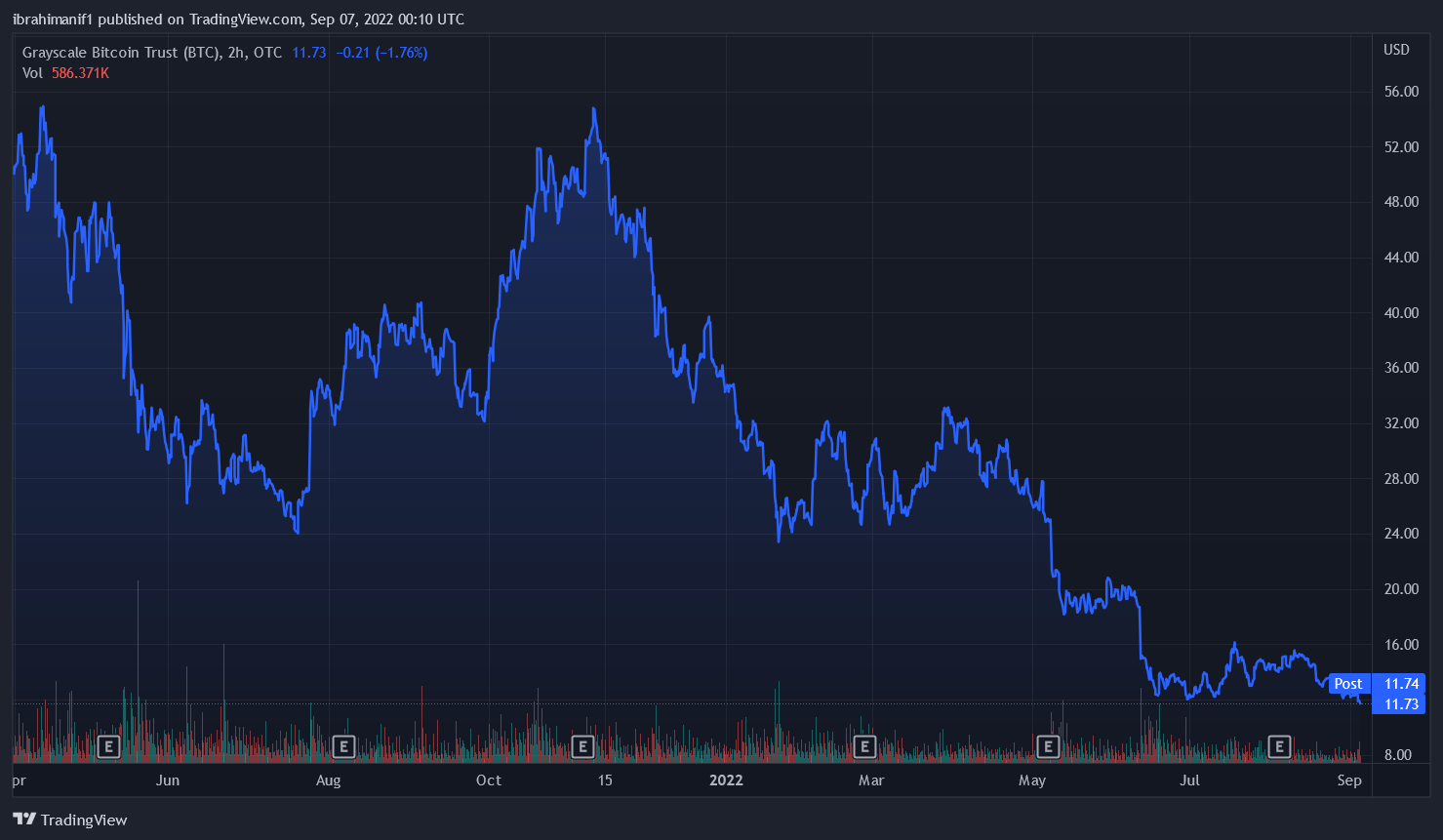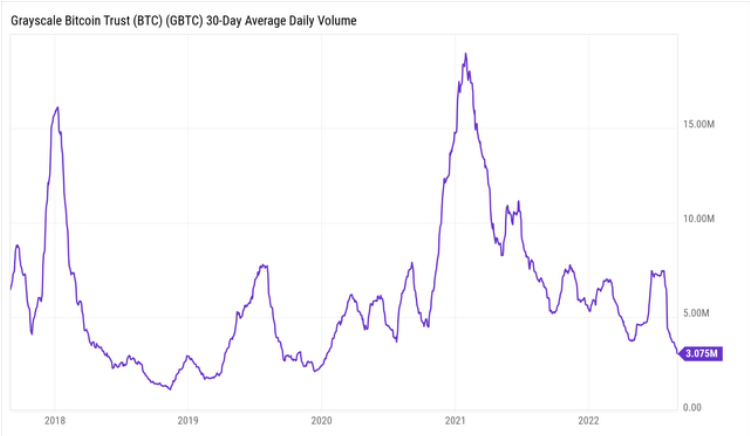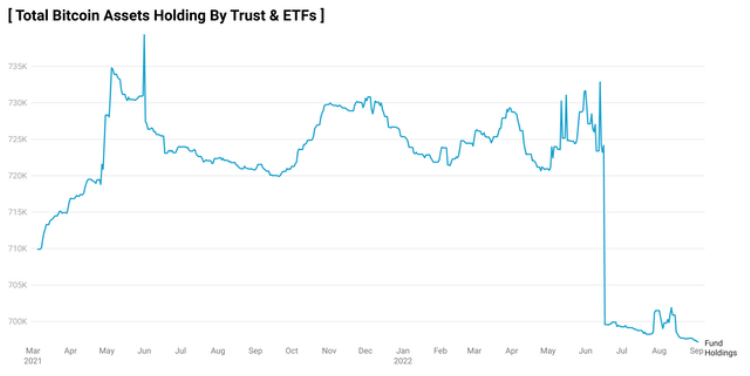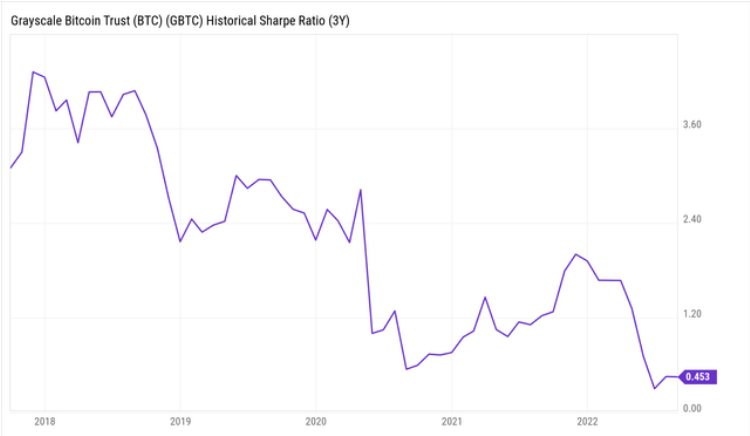Bitcoin Investment ETFs and Trusts have declined since May
Many investors are uneasy as Bitcoin value has fallen by around 70% since its peak in November 2021. Meanwhile, market sentiment is at an all-time low due to analysts’ expectations of a major recession. This is particularly evident from the decline in the stock markets as measured by the S&P 500 and Nasdaq 100 indices, which have a major impact on how people invest in BTC on regulated markets.
Bitcoin investment vehicles have taken a beating
Looking at Grayscale Bitcoin Trust, the share price has dropped significantly from its high of about $56 to $11.94. At the same time, the share values of the 3iQ CoinShares Bitcoin ETF and the Purpose Bitcoin Canadian ETF both fell sharply.

The Grayscale Bitcoin Trust (GBTC) has fallen deeply to $11.94 since its peak. Source: TradingView
Despite the stock’s significant discount, GBTC’s daily trading volume has dropped drastically to 3.075 million. It suggests that institutional investors may be skeptical of Bitcoin-related financial products on the regulated market, or they may simply believe that the bear market is not yet over.

The daily trading volume of GBTC has sharply dropped to 3.075M despite the generous discount of the shares. Source: YCharts
In addition, given current market conditions, certain trusts and ETFs are gradually selling off their holdings. For example, since it peaked in February 2022, the total amount of BTC held by Grayscale Bitcoin Trust has decreased. Furthermore, since the market peaked in May 2021, the total number of Bitcoins held by various trusts and ETFs has declined sharply.
The Sharpe ratio indicates that GBTC is a poor asset with very low risk-adjusted performance in terms of return on investment. In fact, the Sharpe ratio has recently fallen to 0.453 after declining over time. This means that while GBTC’s volatility is quite high, the expected return on investment is quite modest.
Loss after loss
The current cutting-edge crypto investments in regulated markets, including trusts and ETFs, have shown the pessimistic signal to some extent. Despite the significant discount at which GBTC has been sold, daily trading volume is steadily declining, and several trusts and ETFs, such as the Grayscale Bitcoin Trust, have been encouraged to sell their BTC holdings.

The total number of BTC held by trusts & ETFs has plummeted since May 2021. Source: CryptoQuant
The current Bitcoin investment vehicles in regulated markets such as trusts and ETFs have shown the bearish signal to some extent. Although GBTC has been trading at a significant loss, daily trading volume continues to decline and some trusts and ETFs, including the Grayscale Bitcoin Trust, have been encouraged to divest their Bitcoin holdings.

Sharpe ratio tells us that GBTC is a poor asset with a very low risk-adjusted performance. Source: YCharts
Because the shares of GBTC sold or bought by institutional investors are reported quarterly, many recent trades may not have been noted yet. However, these numbers above can give us some clues about what is actually happening with Bitcoin behind the scenes.
Traders may only be aware that a local bottom has been reached after it has already occurred, such as for institutional investors who bought GBTC in late June just before the July rally.
Most notably, the Sharpe ratio shows that GBTC’s return on investment is quite low and that this asset appears to be quite risky. Therefore, at this point, investors will be ready to start hedging against the increasing negative downside risk of bitcoin.
Featured image from Unsplash, charts from TradingView.com, Ycharts, and Cryptoquant


